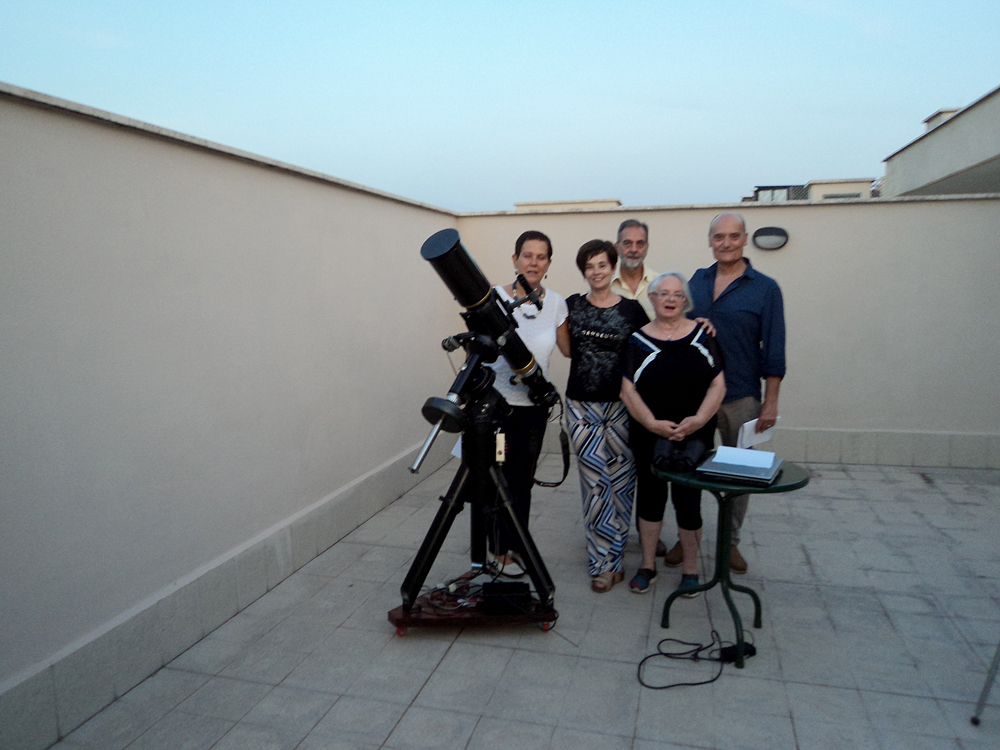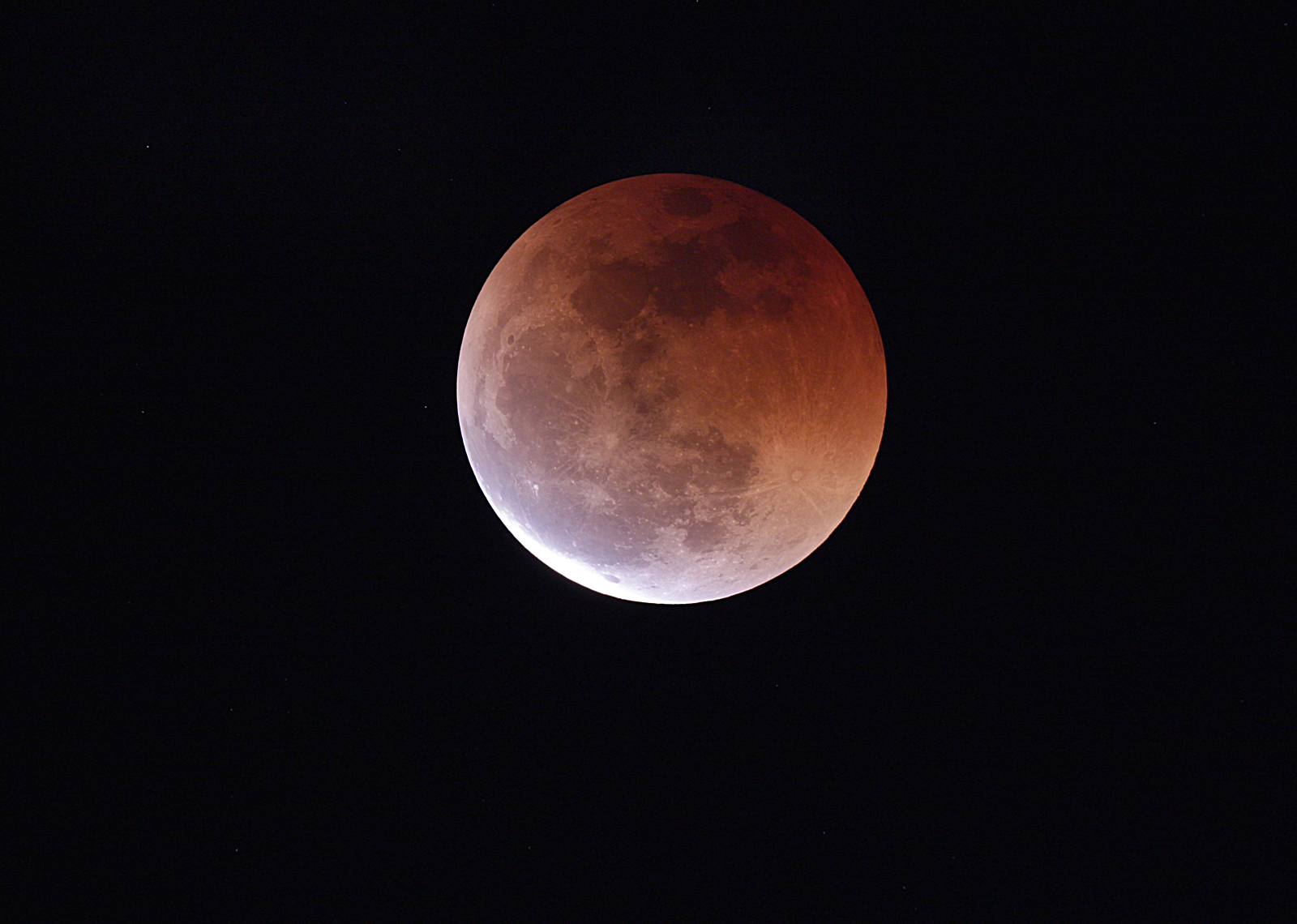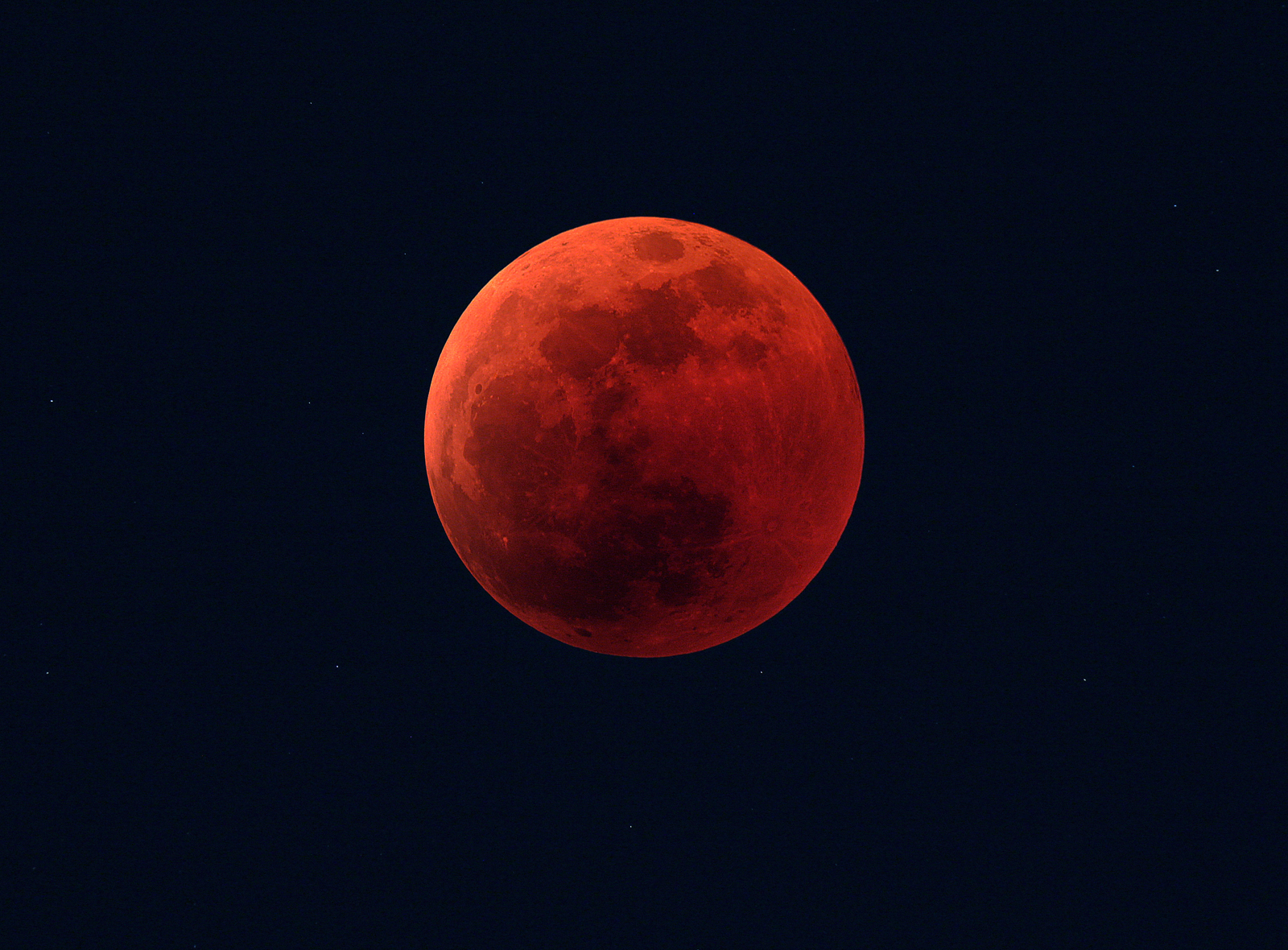
Eclissi
Eclipses
Eclissi di Luna
Un' eclissi lunare è un noto fenomeno ottico durante il quale l'ombra della Terra oscura del tutto o parzialmente la Luna e che si verifica nel momento in cui quest'ultima è in fase di "piena" mentre il sole, la terra e la luna si trovano allineati in quest'ordine.
Un'eclissi
lunare totale si verifica quando la Luna transita completamente attraverso
l'ombra della Terra.
La Luna attraversa prima la penombra, poi l'ombra e infine, dopo esserne uscita,
interessa di nuovo la fascia penombrale. A causa degli effetti di colorazione
rossastra che assume con la rifrazione dei raggi solari che attraversano
l'atmosfera terrestre e per l'oscuramento parziale prima dell'entrata in ombra
e durante l'uscita, questa è il tipo di eclissi lunare più osservata. L'ultima
eclissi lunare totale è avvenuta il 21 gennaio 2019 alle ore 05:12 (massima
oscurità) e la prossima sarà il 16 maggio 2022 alle ore 04:11 (massima oscurità)
mentre la prossima visibile totale in Italia sarà quella del 31 dicembre 2028
L'eclissi lunare del 27 luglio 2018 è stata
la più lunga del secolo, avendo raggiunto una durata massima di 1 ora e 43
minuti.
A lunar eclipse is a well-known optical phenomenon during which the shadow of the Earth completely or partially obscures the Moon and that occurs when the latter is in the "full" phase while the sun, earth and moon are aligned in this order.
The Moon first crosses the penumbra, then the shadow and finally, after leaving
it, it again affects the penombral fascia. Because of the reddish coloring
effects that it takes with the refraction of the solar rays that cross the earth's
atmosphere and due to the partial darkening before entering the shade and during
the exit, this is the most observed type of lunar eclipse. The last total lunar
eclipse took place on 21 January 2019 at 05:12 (maximum darkness) and the next
will be 16 May 2022 at 04:11 (maximum darkness) while the next total visible in
Italy will be that of 31 December 2028
The lunar eclipse of 27 July 2018 was the longest of the century, having
reached a maximum duration of 1 hour and 43 minutes. Here are some images of the
eclipse in the totality phase, taken by Fulvio Mete from his Ponte di Nona
Observatory, in Rome, Italy, by a TMB LZO 115/800 apo refractor and a Canon 550
D DSLR.

Nella foto mia moglie ed alcuni amici che hanno preso parte all'evento
Fulvio Mete -Roma

L'ingresso nella totalità

La totalità